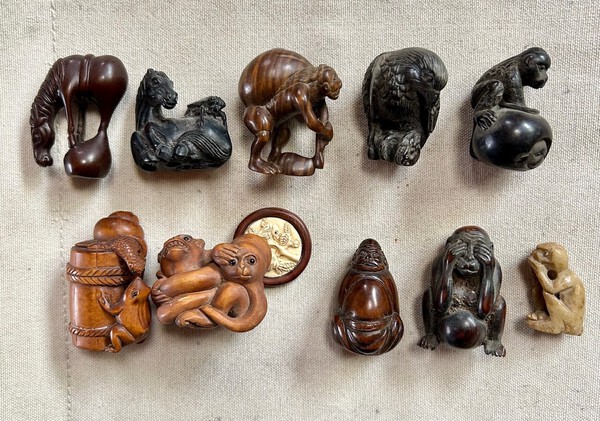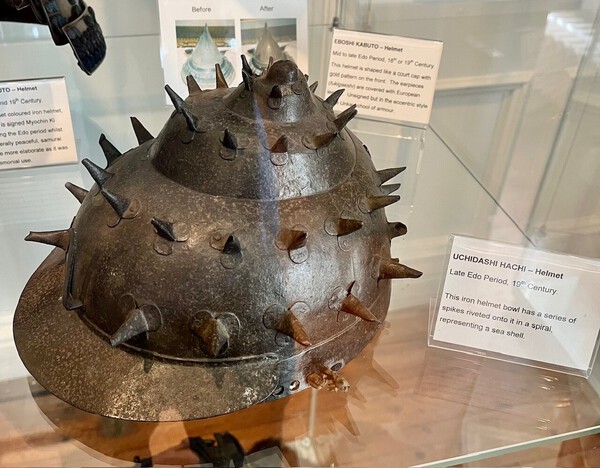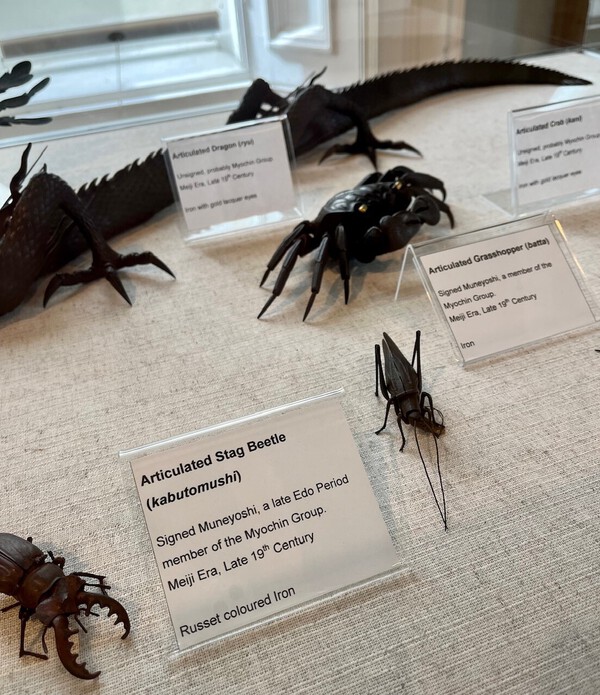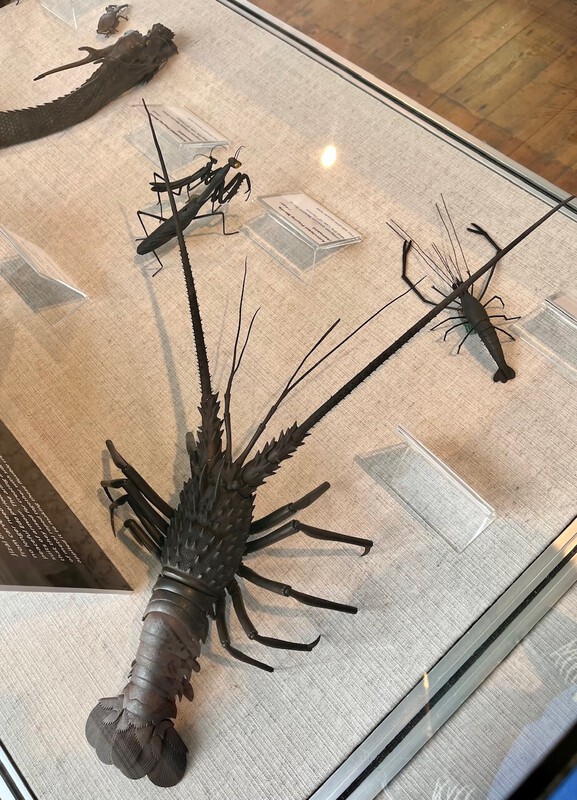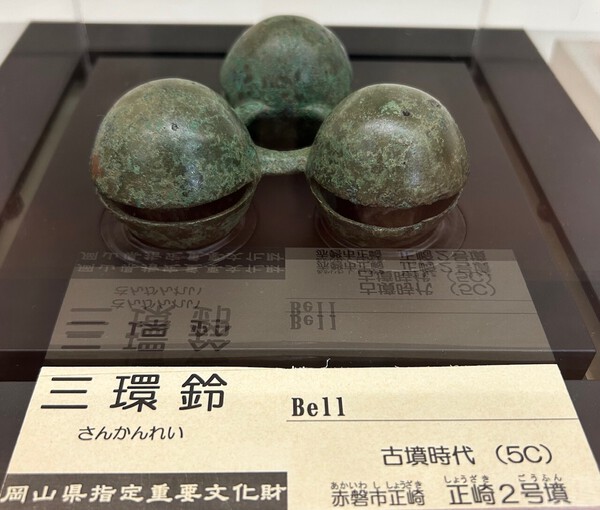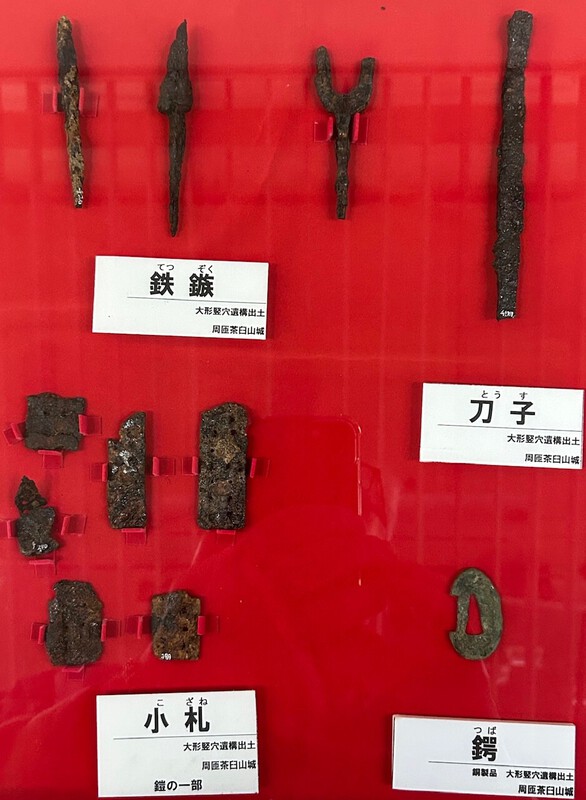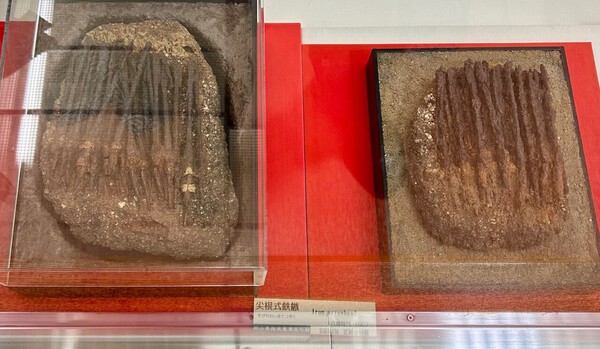-
Posts
13,933 -
Joined
-
Last visited
-
Days Won
253
Content Type
Profiles
Forums
Events
Store
Downloads
Gallery
Everything posted by Bugyotsuji
-
We are often forced into some kind of guessing game, looking behind the words. For example the attribution on your paperwork is Uda, but it does not say 'Den' Uda 伝宇多; in other words they are pretty sure it is an Uda blade. What is the meaning of DEN - Tosogu - Nihonto Message Board
-
I'm guessing not many have found this nook corner haven, so let's give it a full earth day. Top row, from left. 1. Horse grazing with bound legs, or emerging from gourd. 2. Horse lying with large fly on back. 3. Strange creature with stick, carrying sack. 4. Perching eagle. 5. Monkey with hands caught in jar. Bottom row. 6. Snail and frog kissing. 7. Octopus and monkey entwined. 8. Warrior with sword behind back. 9. See-no-evil seated monkey. 10. Speak-no-evil seated monkey. + small kagami-buta type manju button (behind octopus)
-
As Jean says, the whole thing is the complete address of the organization. Are you wanting this in Romanized form?
-

3 in one oil for nihonto ?
Bugyotsuji replied to Bosco's topic in General Nihonto Related Discussion
If there is no active rust already, no need to add or do anything. The oils from your fingers will help keep the Nakago black and stable. -

3 in one oil for nihonto ?
Bugyotsuji replied to Bosco's topic in General Nihonto Related Discussion
Of course there is some kind of 100% pure mineral oil that some Nihonto folks swear by. -
Conversely, a strange thing happened at a sword meeting about a year ago. I have a kozuka with a Sukekane Mei on the blade. I showed it to the sword Sensei, and without hesitation he said, "Yes, it's a genuine example of a Sukekane Mei". He had no doubt that it was made by (a) Bakumatsu Bizen Sukekane. Perhaps at that time there was no one faking Sukekane kozuka blades!?!? The exception proves the rule?
-

3 in one oil for nihonto ?
Bugyotsuji replied to Bosco's topic in General Nihonto Related Discussion
On the bottle it says “For the protection of high quality blades”. Camellia Oil for Blades -
Moriyama San, you have very good eyes!
-
And… by popular acclaim, here is our old favourite, the ‘Sharpen your Eyes’ corner. Can anyone spot the fake, and for bonus points, say why you think it is fake? (More than one answer possible.) PS Yes, without taking these in hand and examining them closely it is not an easy task. More photos available upon request.
-
Very similar in feeling! (Partly confirms a suspicion I had.) Nice find, Colin, thanks! (Do you have a photographic memory, by any chance, or was this just coincidence?)
-
Meantime, to kickstart this thread, here is a netsuke. It is quite representative of Netsuke in general, a little small perhaps, and the only reason I have chosen this one is that it is my latest find. (And I like it.) Unsigned, it is probably carved from 'tsuge' 柘植, 黄楊, 樿 etc., boxwood, for which there are various Kanji. Buxus microphylla var. Japonica. The carving is finely done, and the netsuke is a pleasure to hold in the hand. There are no added himotoshi holes, this netsuke taking advantage of the natural gaps between the stems of the mushroom branch through which to pass the strings. (Re Himotoshi. Himo 紐 means string/cord, and 通し toshi is part of the verb 通す tosu, to pass through. Short for himotoshi-ana, or 'string-threading holes'.) What would once have hung from this possibly seasonal Netsuke? Quite realistically carved, I can imagine that it might stimulate the taste buds of a Japanese person. Photos follow Can be enjoyed from any angle.
-
廣 Hiro… for the first character, I reckon.(?) PS Thanks for all the extra pics. It definitely helps!
-
At risk of going off-topic, Majus, Russ, I have some photos of Chiddingstone armour too. For example:
-
Majus, apologies for the poor photo quality and reflections. (As I was trying to get around the glass cases for a better angle I must have set off the motion sensors!)
-
There are some really very good jizaimono in Chiddingstone Castle in Kent. If I can find a photo or two... (And Kevin Page in London has some amazing ones too.) And Also
-
That looks like his thatched cabin, which must also act as a hide. I've seen thatched-roof boats on the lake in Korakuen.
-
Getting water to make tea, or cook rice?
-
+清 方清 Hosei or Katakiyo generally, but as a smith, to be read Nio Masakiyo.(?) https://asiaartgallery.jp/category/touken/results/005/
-
Totally agree they bear little resemblance, and it is hard to imagine the same person being able to write in differing calligraphy quite so schizophrenically. After searching several Kuzushiji websites, I have given up on this, although your original guess for 津 could still be correct. Perhaps one of our esteemed NMB guardian gatekeepers could step in and sort this out?
-
Motte sabinai tetsu saku kore Kanenaga Kanenaga made this from stainless steel. (On the wood habaki it also seems to say Kanenaga)(?)
- 1 reply
-
- 6
-

-

Edo Period Corner Part II
Bugyotsuji replied to estcrh's topic in General Nihonto Related Discussion
Yes, there is a puzzle there, Robert. Japan was producing and using iron arrowheads by then, but they were a different shape. Clumps of them were found in the same kofun tombs. The bronze artefacts tend to be less corroded, in much better condition. I wonder if they were more artistically pleasing, perhaps to be given as gifts, like bronze mirrors but smaller and simpler, as I cannot see them piercing iron 'tanko' armour, as you say. Bronze techniques were probably highly developed, but iron less so. Following a set of bells, and the rusted arrowhead examples. 5th C AD. Arrowheads etc. Clumped together. Apologies for reflections in glass -
https://www.google.com/search?q=月山貞一+銘&ie=UTF-8&oe=UTF-8&hl=en-gb&client=safari#vhid=6PL1phFFd716rM&vssid=_ycE5aJ_WG7f51e8P07HwwAk_31 In the meantime you can read up on Gassan, and run searches for genuine Sadakazu Mei with which to compare yours… https://eirakudo.shop/token/tachikatana/detail/838671
-
He’s good…
-
Well, I have told you that it is a Tantō, in reply to your question: “What is it?” I have told you the signature reads Gassan (a long line of famous smiths) Sakazu, who is one smith of that line. As to the identical repeated posts from you, I am puzzled. (If you like I can say all that in Japanese, politely, without using AI.)
-
Thank you! Tantō range up to 30cm +/- Gordon, so yours would not be a Wakizashi.



